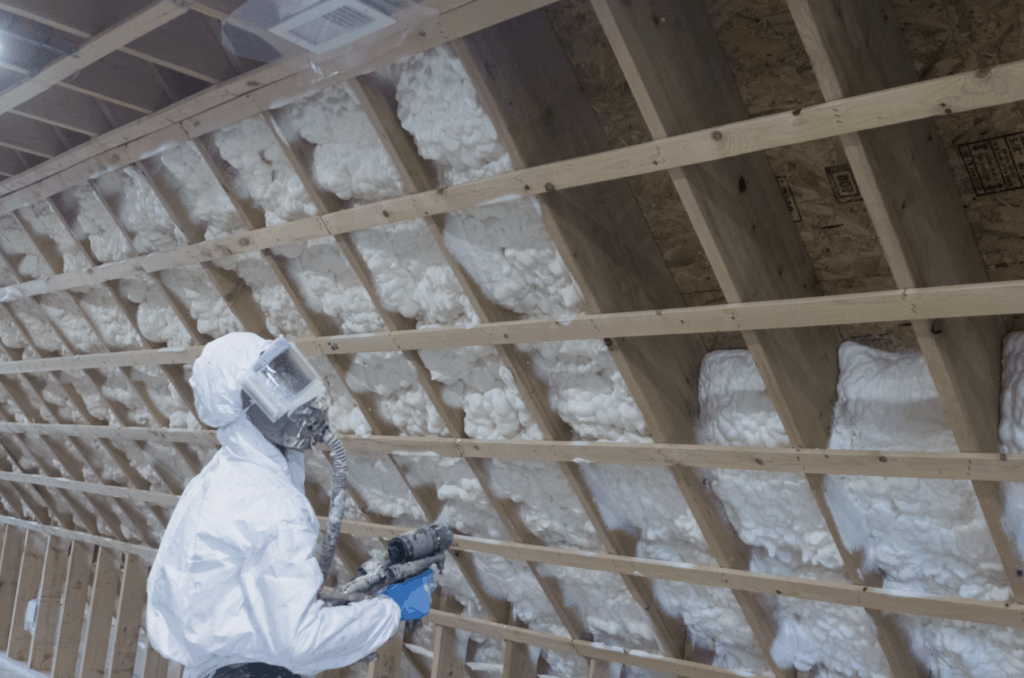You want to take advantage of the benefits of weatherization: a warmer home, savings on your fuel bills, fewer drafts. But the costs feel like a big unknown, and you’re not sure where to start. Upfront costs are a concern for most home improvement projects. Good news: Most Vermonters are eligible for incentives and low interest financing. Efficiency Vermont offers these three steps to take to complete a home weatherization project and reap the benefits for years.
Low-income Vermonters are eligible for free weatherization services through your local weatherization agency. If you think you’re eligible, you can read more about the program and contact your local agency.
Find a qualified contractor
It is important to hire a contractor that is trained and certified through the Building Performance Institute (BPI). BPI is an independent, not-for-profit organization that sets national standards for residential energy efficiency and weatherization retrofit work. This certification means your contractor will be knowledgeable about building science and they will take a whole-building approach to weatherization. They will look at how to maximize energy savings, boost your comfort, and keep your home safe and healthy. In addition to adding air sealing and insulation to tighten up your home, they’ll make sure to avoid moisture problems and keep indoor air healthy.
Only BPI certified contractors can be part of our Efficiency Excellence Network (EEN), and only EEN members have exclusive access to Efficiency Vermont rebates.
You can feel confident that EEN members are committed to providing their customers the highest level of professional energy efficiency services. Find a qualified EEN contractor to work with at efficiencyvermont.com/contractor.
Prioritize which energy improvements make the most sense for you
Your contractor will need to come to your home to perform an energy audit or home energy assessment. This visit will show them the most important areas of energy performance improvements. Sometimes the contractor will complete a blower-door test to understand how air is leaking out of your home. You may also see the contractor use an infrared camera that helps them see hot or cold areas of your home. After the visit, they’ll provide you with a list of actions you can take. You and your contractor should discuss how those actions will help save energy and improve the comfort, health, and safety of your home.
Once you decide on which pieces of the project to move forward with, an EEN contractor can help you apply for available incentives and financing through Efficiency Vermont.
Budgeting for weatherization
Your decision about what actions you move forward with will probably involve looking at your budget. While weatherization can save you money on your energy bills for years to come, you’ll still need to consider how the upfront cost of the project can fit in with other expenses.
You can break the cost into monthly payments rather than covering the entire cost upfront. Reducing the upfront cost will help you feel the benefits on your fuel bills more quickly. Looking at the costs, benefits, and incentives will help you make an informed decision about what is best for your household.
Efficiency Vermont offers incentives that can bring down the upfront cost.
Want a more hands-on approach?
If you’re one of many Vermonters who like to tackle home improvement projects on the weekend, there may be some weatherization work you can do yourself. Efficiency Vermont offers a rebate on weatherization materials that you can buy at your local hardware store.
Find out more about D.I.Y. projects like air sealing around common leaky spots, insulating your attic and attic hatch, installing storm windows, and more.
Don’t forget you can always call Efficiency Vermont at 888-921-5990 if you’re not sure about the best way to move forward with your project.
Are you renting or do you own a rental property?
Landlords and tenants alike can benefit from weatherization. Efficiency Vermont works closely with landlords on energy efficiency upgrades in rental properties. Whether the renter or the landlord pays for energy bills, both will benefit from reduced bills and higher comfort levels in the unit, which may result in lower turnover.





